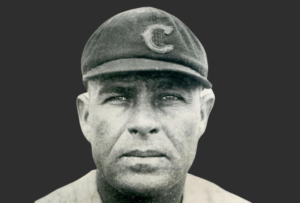Baseball’s historic ballparks, such as Ebbets Field, Fenway Park, and Wrigley Field, have profoundly influenced gameplay, team strategies, and fan experiences, shaping the sport’s golden eras. Known as “jewel box” parks, these venues, built in the early 20th century, were designed within urban landscapes, resulting in unique dimensions and quirks that defined how baseball was played and enjoyed. Their legacy persists, even as modern retro-style parks attempt to recapture their charm with contemporary enhancements.
Ebbets Field: Brooklyn’s Urban Gem
Ebbets Field, home to the Brooklyn Dodgers from 1913 to 1957, exemplified the constraints of urban ballpark design. Its asymmetrical outfield, shaped by surrounding city blocks, featured high walls to prevent easy home runs, challenging hitters to rely on precision rather than power (Ballpark – Wikipedia). This influenced the Dodgers’ strategy, emphasizing contact hitting to exploit shorter field areas. Pitchers, meanwhile, adapted to varied outfield depths, aiming to induce ground balls.
For fans, the park’s intimate setting, with seats close to the field, fostered a strong community connection, though limited parking and reliance on mass transit reflected the era’s infrastructure. Demolished in 1960, Ebbets Field’s design inspired modern parks like Citi Field, which nods to its predecessor’s layout.
Fenway Park: The Green Monster’s Legacy
Fenway Park, opened in 1912, is Major League Baseball’s oldest active stadium, renowned for its 37-foot-high Green Monster in left field, just 310 feet from home plate. This wall transforms potential home runs into doubles or outs, requiring outfielders to master carom plays (Fenway Park – Wikipedia). The Boston Red Sox tailor strategies to this quirk, favoring right-handed hitters who can target the short right field (302 feet) and positioning fielders to anticipate wall bounces.
The park’s dimensions—left center at 389.9 feet and center at 420 feet—also benefit pitchers by reducing home run frequency in deeper areas. Fans experience a historic atmosphere, with the manual scoreboard and Pesky’s Pole in right field adding nostalgic charm. With a capacity of 37,673, Fenway’s urban location and renovations from 2002 to 2011 maintain its allure while improving accessibility.
Wrigley Field: Wind and Tradition
Wrigley Field, opened in 1914, is defined by its asymmetrical dimensions and environmental factors, particularly wind from Lake Michigan, which can carry fly balls further or hold them back (Wrigley Field – Wikipedia). With outfield distances ranging from 353 feet in right to 400 feet in center, the Chicago Cubs adjust strategies based on wind conditions, with hitters aiming for line drives on windy days and pitchers exploiting wind to disrupt timing.
The ivy-covered outfield walls, a visual hallmark, occasionally affect play by hiding balls, requiring defensive adjustments. Fans, with a capacity of 42,495, engage in traditions like the seventh-inning stretch song “Take Me Out to the Ball Game,” enhancing the park’s communal spirit. Renovations completed by 2019 and the addition of lights in 1988 modernized Wrigley while preserving its historic feel.
Ballpark Design and Betting Insights
The unique traits of each ballpark also influence sports betting markets. Park factors, which measure a stadium’s impact on hitting and pitching compared to league averages, are critical for oddsmakers.
For instance, Fenway’s short left field may increase over/under totals for runs, while Wrigley’s wind patterns can lead to unpredictable scoring, affecting betting odds (Ballpark Architecture). Bettors consider these factors while exploring reliable platforms that offer bonuses like bet365 bonus code and have different tools and insights that help analyze upcoming games and events. This analytical layer adds depth to the fan experience, connecting architecture to modern engagement with baseball.
The Shift to Modern Retro-Style Parks
The mid-20th century saw a shift to multi-purpose stadiums, which prioritized functionality over character, hosting baseball and football in larger, utilitarian spaces (Evolution of Baseball Stadiums). These “concrete donut” designs, like those built in the 1960s, lacked the charm of jewel box parks and often alienated fans with their sterile environments. By the late 20th century, a renaissance in ballpark design emerged, led by Oriole Park at Camden Yards, opened in 1992.
Camden Yards blended nostalgic elements, such as asymmetrical fields, with modern amenities like open concourses and family-friendly areas, setting a standard for parks like Petco Park (Stadium Design – The Conversation). Unlike historic parks, shaped by urban constraints, modern parks are intentionally designed to reflect local culture, such as Camden Yards’ integration of Baltimore’s B&O Warehouse, enhancing fan engagement.
Comparing Historic and Modern Designs
Historic and modern ballparks differ significantly in design philosophy and fan experience. Historic parks, built within city grids, resulted in quirky, asymmetrical fields that challenged players and charmed fans. Their urban locations, with limited parking, relied on mass transit, creating intimate but sometimes inconvenient experiences. Modern retro-style parks, designed by firms like Populous, prioritize fan comfort with wider concourses, diverse food options, and entertainment zones, while maintaining baseball-specific designs (Baseball Urbanism). For example, Petco Park’s “park within a park” offers unique viewing areas, contrasting with Fenway’s constrained seating. Economically, both eras’ parks stimulate local businesses, but modern designs emphasize broader community integration, reflecting urban planning trends.
Ballpark design has been a cornerstone of baseball’s evolution, from the quirky, urban jewel box parks of the early 20th century to the fan-centric retro-style stadiums of today. Ebbets Field, Fenway Park, and Wrigley Field not only shaped gameplay and strategies but also created lasting fan experiences that defined baseball’s golden eras. Modern parks, while more comfortable and versatile, draw inspiration from these icons, ensuring that the sport’s architectural legacy endures.





